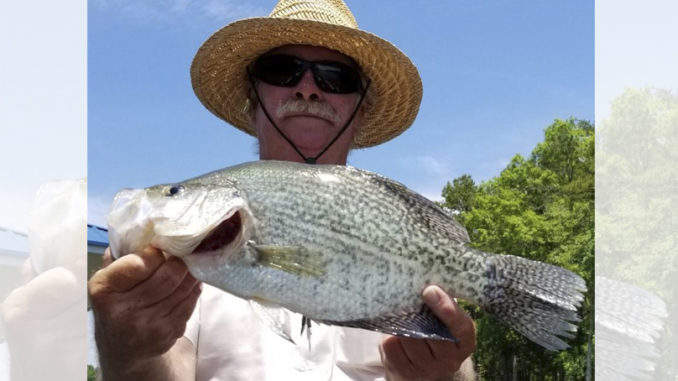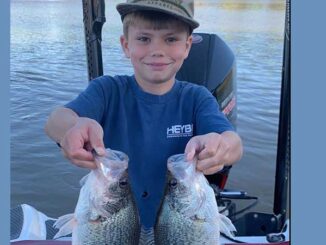
As Kerr Lake waters recede, the crappie bite picks up
Fishing on John H. Kerr Reservoir along the North Carolina-Virginia border has been all out of whack for the past two weeks or so. That’s because of rising and extremely high water. But things are starting to settle down on the 49,500-acre reservoir on the Roanoke and Staunton rivers — at least for crappie guide Chris Bullock of Fountain, N.C.
Bullock has been waiting for the waters to recede from a May 27 high of 14 feet above full pool — 315.2 feet above sea level — so he could at least reach some of the fish. Shoreline timber has been flooded with water, and the bank have been hundreds of yards from the edge of the tree line. So most fishermen haven’t been able to get even close to fish, much less catch them.
The water went from very close to normal pool of 301.8 on May 18 to 315.2 in nine days. That’s thanks to tropical storms and another weather front that dumped plenty of rain over the watershed. But it started dropping and got to a place that gave Bullock a chance. And the Kerr Lake crappie responded.
Electronics play key role in locating fish when water is high
“I have noticed that when the water has been real high and starts to come down out of the trees, before it gets down to where they’ll go back out to brush piles, that they’ll get on boat docks,” said Bullock. He runs Kerr Crappie and Catfish Guide Service. “I went up there and found them today (June 5). They were under normal docks that are good during the spring. The only thing different was, everything had 10 or 12 more feet of water under it.”
The big reservoir has a tendency to flood and fall. So most of the docks on the lake’s shoreline are floaters of some kind. Bullock said he would ease up to a dock, check under it using his LiveScope, side-scan electronics, and see crappie. Then, he would shoot a jig back under the dock. He used either an open space between floats or in slips where boats were docked.
Find the fish, then turn off your electronics
“The average dock, you could count on seeing 20 crappie,” said Bullock (252-902-4039). “Some docks that held bigger fish, you might only see eight or 10. Some docks had 50 or 60 under there of all sizes.”
Bullock reached them by “shooting” a jig with a 6-foot-6, Lew’s Wally Marshall Speed Shooter spinning outfit, spooled with 6-pound Sufix Elite mono tied to a 1/16-ounce jighead with a Bobby Garland Baby Shad soft plastic in sunrise or black/chartreuse colors.
Bullock said he did most of his damage around mid-lake areas where he found 78-degree water.
“One key, I found was, if I pulled up and saw them back under the dock on my LiveScope, you’d shoot it back up under there and see the fish come and get it. If you kept the LiveScope on, you’d only catch one or two before they’d quit biting. But if you looked and saw them on the Scope, saw how far back they were and how deep they were, then turned the transducer off, you could catch a lot more of them. I think the (sonar) from that LiveScope was pinging off plastic floats, cables, the bottom of pontoon boats — anything back up under there — and it was spooking the fish.”





Be the first to comment